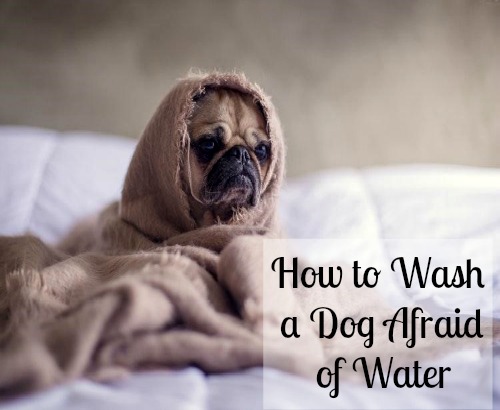How to Wash a Dog Afraid of Water
 It’s a common misconception that dogs simply love splashing. In fact, some dogs can get pretty averse to water like a toddler throwing a wild tantrum come bathtime.
It’s a common misconception that dogs simply love splashing. In fact, some dogs can get pretty averse to water like a toddler throwing a wild tantrum come bathtime.
If your furry friend is a little aquaphobic, bath time can be a stressful time. Thankfully, there are things you can do to turn it all around.
Introduce the love of water to your beloved pet by easing their fear. Using positive reinforcement, you can encourage the desired behavior and help them finally come round. Here are some helpful tips.
Make a Gradual Introduction
Begin with limited, controlled exposures. If you own a rescue dog, the fear of water may have been a result of a past traumatic event. So always remember rule 1: never coerce your dog into the water if they clearly have an aversion to it. That will only reinforce the negative association and make them fear the water more, making it even harder to cure it.
Start by filling a small basin of water and placing it next to them. If it doesn’t generate visible fear, reward them for the behavior.
Next, dip your hand into the basin of water and let them sniff the wet hand. If the reaction is calm, give a reward.
Afterward, wet their fur with your wet hand ever so slowly, letting them feel the liquid gradually. Once more, reinforce positive behavior. If they squirm and get visibly anxious, simply stop. It’s important that they don’t feel forced to do something.
This method can take days to weeks before it finally breaks through.
Practice Wading
If your pup has a mild level of water anxiety and is fine with being around water, you can try the wading approach.
Fill a small basin with water. You can also use a small kiddie pool so you and your pup can take a dip. Hold your pup to make them feel safe. If that’s not enough, gather enough of their toys and dog treats for rewards.
After a few minutes of acquainting them with your setup, gently place the canine in the water, never letting go and letting them feel your hand holding them. If the reaction is positive or they remain calm after looking a little unsure, give them rewards.
In time, they will associate water with these rewards and are more likely to repeat the positive behavior.
Keep Calm
You can’t hope for your dog to get friendly with the water if you yourself are uneasy around it. Your dog can easily sense it when you’re nervous. So if you’re training them around a pool where you really don’t want to get in, either because you can’t swim or you have a trauma, then you can’t expect any positive outcome from it.
So keep your calm. Don’t train your dog around deep water if you can’t swim. And perhaps maybe training yourself first before training your dog is the best way to go. Or let someone else do it.
Use a Flotation Device
Keep panic at bay with a special dog vest that can aid them in their initial swimming practice. These vests are designed to help dogs breathe properly mid-swim.
If the panic sets in, they won’t sink and will simply stay afloat. Once they realize that, they can relax, get a feel of the water, and eventually start paddling.
Final Word
No more anxious bath times once they finally love the splash. For a dog parent, it will require a lot of patience, but the payoff is priceless. Use these techniques and tips to get your doggy swimming in no time.